Dynamic Spectrum Sharing in Action
Every day, more devices and users need access to a wider array of spectrum resources – which is why a huge swath of U.S. organizations are adopting locally licensed, shared spectrum systems. Dynamic spectrum sharing is driving innovation, fostering robust market competition, and advancing U.S. wireless leadership in future technologies. This includes the Citizens Broadband Radio Service (CBRS), which is being used to boost connectivity, improve efficiency, bolster worker safety, and more.
The success of CBRS demonstrates that sharing regimes can and should be deployed in other key spectrum bands. The reality is that dynamic spectrum sharing:
Advances Investment.
In just a few short years since the FCC first licensed low-power operations in the CBRS band, spectrum sharing is attracting investment at a rapid pace – with over 368,000 CBRS base station devices deployed.
Drives Innovation.
Given its accessibility to a wide variety of commercial operators, CBRS provides a myriad of options for operators in suburban, rural, and remote areas alike. Private network users can customize these networks to meet their unique needs.
Spurs Competition.
Instead of relying on exclusive, full-power licensing models rooted in the technology of the 1990s, CBRS is both competing with and bolstering traditional wireless network services. A shared spectrum approach combats the narrow utility of legacy models and carriers, driving the kind of competition the U.S. needs now and in the future.
Supports Diverse Use Cases.
To secure U.S. manufacturers and industrial organizations as global leaders, it is increasingly necessary for these industries to customize advanced spectrum solutions. While traditional licensing restricts these entities to off-the-shelf spectrum solutions from a limited number of nationwide carriers, spectrum sharing can provide specific, customized, and lower-cost access to necessary spectrum.
Maximizes a Limited Resource.
Spectrum sharing allows key bands – such as 3.5 GHz in the case of CBRS – to be available for locally auctioned, commercial use while safeguarding incumbent government systems and eliminating the need for costly reallocation requirements or compressing the band.
Recognized Internationally.
Many other countries are working to make spectrum available in new ways for new users and uses, designating substantial amounts of shared mid-band spectrum for private and local networks.
CBRS is enabling cutting-edge technology, communication, and innovation all around us – whether we’re checking in at the airport or enjoying a live sporting event. CBRS is supporting America’s innovative spirit and advancing the public good in our everyday lives.
5G Smart Factory

At Ericsson’s USA 5G Smart Factory in Lewisville, Texas, they’re leveraging Dynamic Spectrum Sharing to enable cutting-edge manufacturing of 5G and Advanced Antenna System (AAS) radios. The CBRS-powered private network supports energy management, environmental monitoring, augmented reality for remote support, and mobile alerting to reduce production loss. It has created 500+ new jobs and turned Ericsson’s 300,000-square-foot facility into “not only a manufacturing site but also a place of innovation” that is literally fueling 5G infrastructure deployment across the United States.
Hospitality
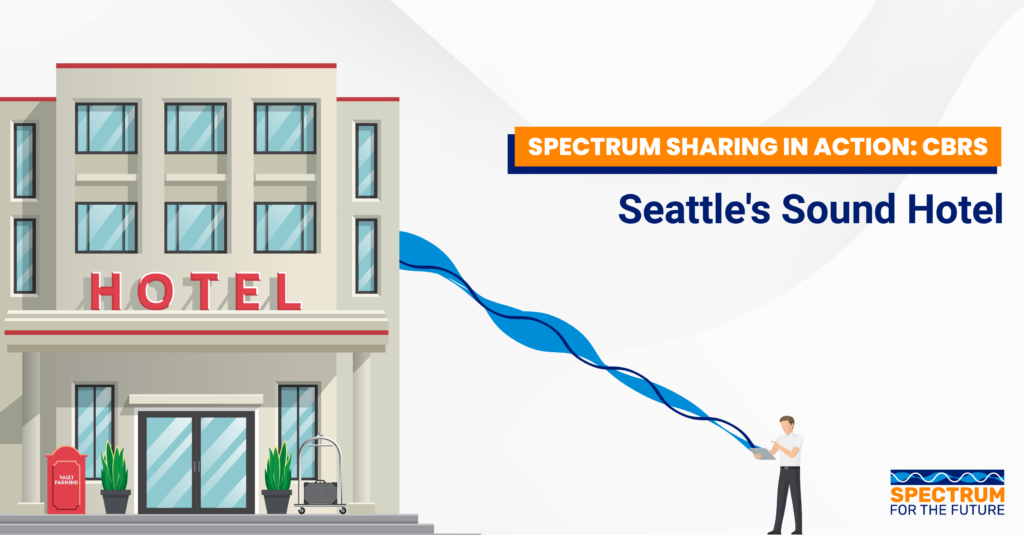
In Seattle, across the Sound Hotel’s 142 rooms, restaurant, and fitness center, a CBRS-based private network is driving the connectivity that guests and employees rely upon 24 hours a day. Spectrum sharing is enhancing a host of hotel operations and security measures, including environmental sensors, video surveillance and staff communication in and around hotel grounds.
Airports
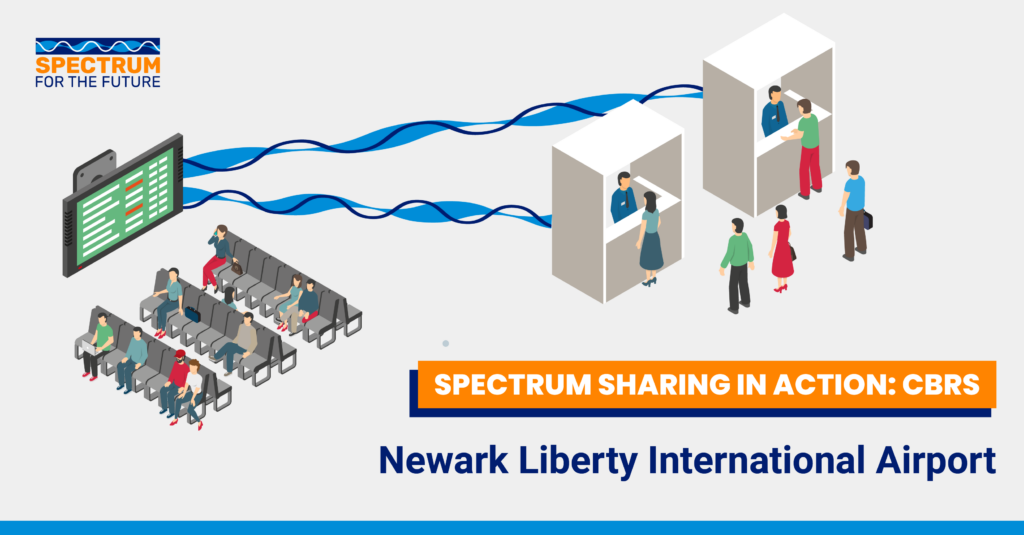
At Newark Liberty International Airport, spectrum sharing is enhancing operations both in and outside of the airport – from updating digital signage, to ensuring fast connectivity for employees and travelers. And at Minneapolis-Saint Paul International Airport – which serviced over 31 million passengers in 2022 alone – CBRS is being used improve a variety of airport processes, like monitoring critical infrastructure and tracking airside maintenance.
Sports & Entertainment
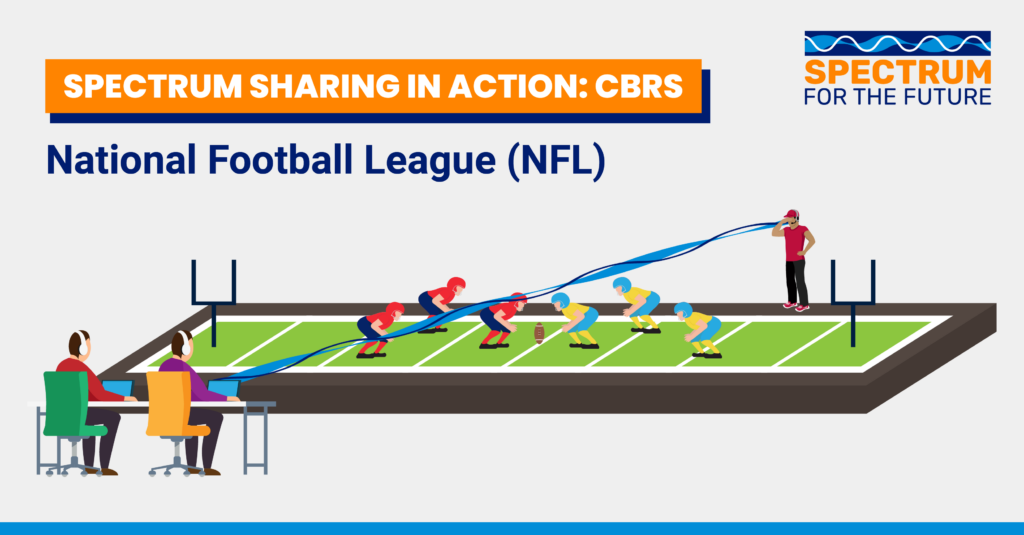
When a stadium is packed to the brim with thousands of fans, reliable connectivity is critical. That’s why the NFL will be using CBRS at all 30 of its stadiums in 24 states – enabling time-sensitive voice communications during the game, backstage communication during broadcasting and on-field video monitoring where seconds matter.
U.S. Armed Forces

CBRS-based spectrum sharing is already benefiting our nation’s military bases in a variety of ways. At the Marine Corps Logistics Base in Albany, Georgia, CBRS enables real-time control of robotics, helps personnel manage critical assets and inventory, and enables authorities to utilize smart security cameras to authenticate personnel and track vehicle arrivals and departures.
Manufacturing
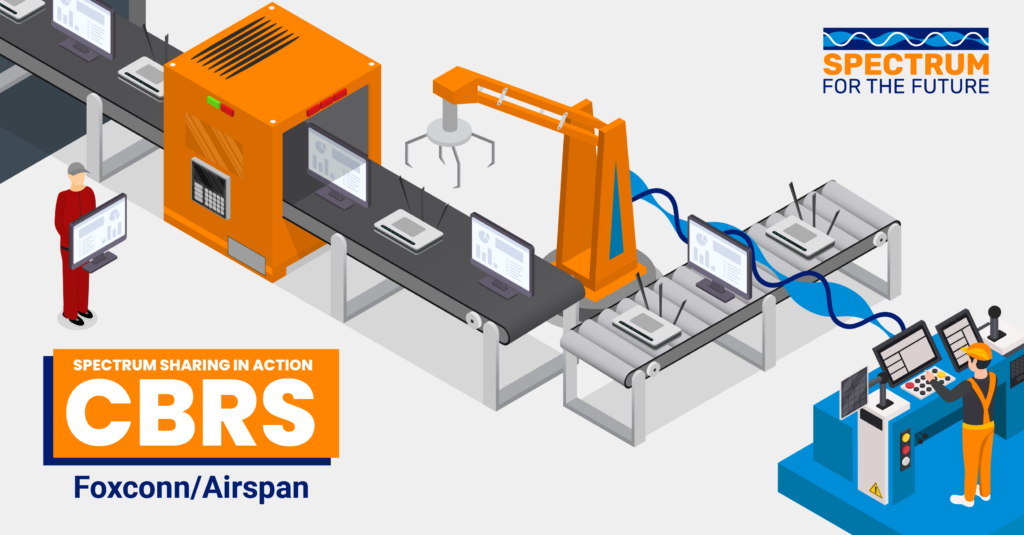
At its 100,000 square foot smart manufacturing park in Mount Pleasant, Wisconsin, Foxconn uses dynamic spectrum sharing in the CBRS band to automate its smart factories. Right now, these solutions are enabling operation of automatic guided vehicles and robotics, while connecting a data center, lab space, factory stations and more.
Higher Education

Students, faculty, and other visitors rely on robust broadband connectivity across Howard University’s 256-acre campus in Washington, D.C. Dynamic spectrum sharing in the CBRS band is enabling this enhanced connectivity daily, giving the university’s 9,000 undergraduate students and thousands of other faculty and visitors the wireless resources they need.
Agriculture
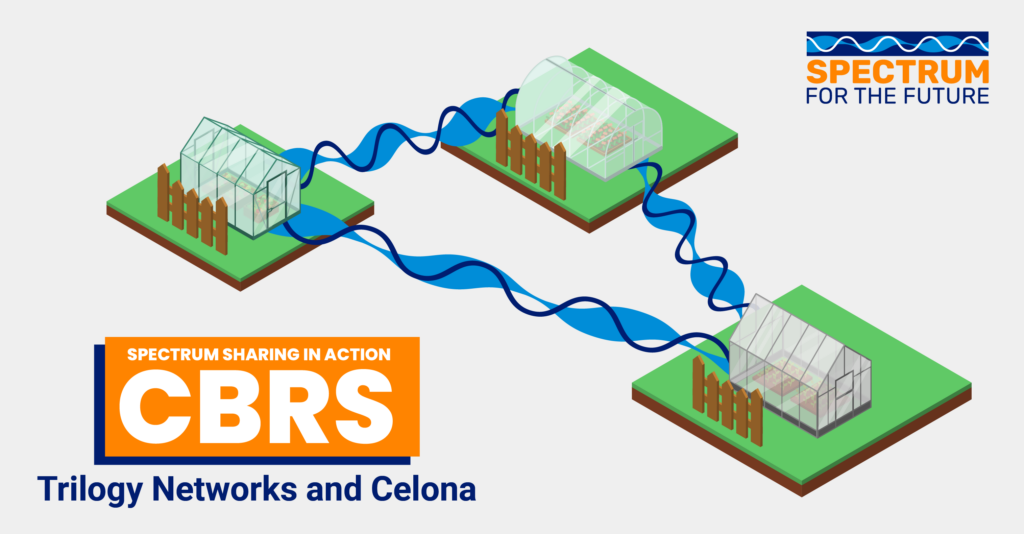
In the small town of Westboro, Missouri, Hurst Greenery utilizes CBRS to connect its 18 greenhouses across 600 acres of land. Starting in 2020, Hurst Greenery’s digital transformation quickly exceeded expectations. They’ve implemented precision agriculture tactics, like automated temperature and soil moisture monitoring, leading to a 10% increase in efficiency and profit.
Supply Chain

A large global retailer plans on testing the use of a wireless networking tool operating in the CBRS band – it can handle four times the amount of traffic of traditional 5G and is designed to control robotic systems to improve warehouse efficiencies. The retailer plans to test this innovative tool at distribution centers in Brooksville, Florida, and Lebanon, Pennsylvania.
Automobile Manufacturing

BMW made a significant technological leap by introducing a private 5G wireless network at its Spartanburg, South Carolina manufacturing facility, aimed at streamlining manufacturing and storage activities and ensuring a seamless operational flow. With a production rate exceeding 1,500 cars daily, this South Carolina facility is the largest BMW manufacturing hub in the world – and it’s powered by CBRS.
